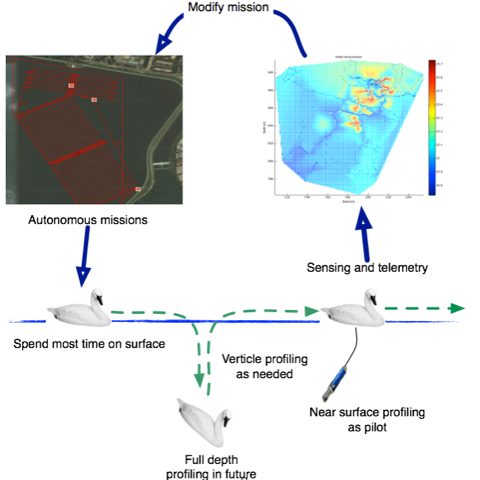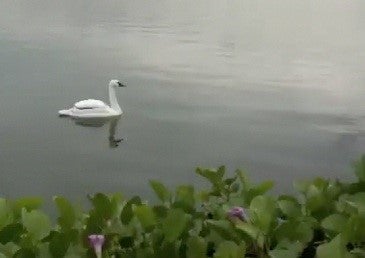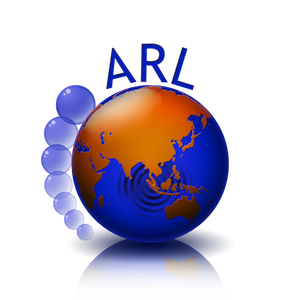Coastal waters and fresh water bodies are complex environments that are highly dynamic over space and time. This makes spatio-temporal monitoring essential to understand and protect these environments. Additionally, persistency in monitoring is needed to increase the chances of capturing transient events.
Unmanned systems such as Autonomous Underwater Vehicles (AUVs), Unmanned Surface Vehicle (USV) and ocean observatory buoys are state-of-the-art assets for spatio-temporal monitoring. Nevertheless they are often too complex, expensive and logistically demanding to be engaged in persistent monitoring of a large area. We believe that cost-effective sensing should rely on simple unattended autonomous platforms that work collaboratively to sense the environment, provide realtime data, and allow interactive mission control.
We focus on developing a sensing network based on this vision. The network typically consists of a fleet of minimally propelled robotic platform vehicles geared for near-persistent environmental monitoring in littoral waters and in-land water bodies. For simplicity and cost-effectiveness, the vehicles are designed to spend most of their time surveying on the surface and to perform profiling only at locations of interests. They minimize the need for propulsion by taking advantage of natural motion due to water current and wind in order to increase their operational endurance. Yet, they can resume full propulsion as necessary for collision avoidance and position-sensitive data collection.

We further minimize operational logistics by removing the need of a support vessel. The vehicles autonomously returns to a predefined shore-based service station for regular maintenance and charging. The data from the vehicles is streamed to a command center for efficient distribution, and the sampling missions can be altered over the cloud.
NUSwan – New Smart Water Assessment Network



